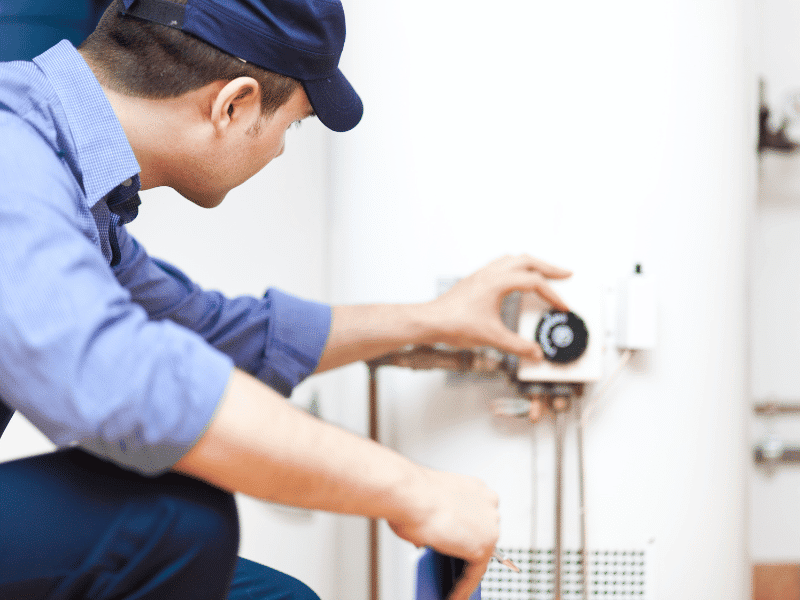If you’re considering upgrading your water heating system, you’ve likely heard about the benefits of tankless water heaters. They offer on-demand hot water, energy efficiency, and space-saving advantages. However, before you make the switch, it’s essential to understand the costs involved and the return on investment (ROI) you can expect. In this blog post, we’ll explore tankless water heater installation costs and the long-term financial benefits they can provide for homeowners.
Understanding Tankless Water Heater Installation Costs
When it comes to installing a tankless water heater, several factors influence the total cost. Here’s a breakdown of the key components that contribute to the expenses:
1. Unit Price
The cost of the tankless water heater itself can vary significantly based on its brand, size, and features. Higher-end models with advanced technology and greater capacity tend to be more expensive.
2. Installation Labor
Hiring a professional plumber or technician for the installation is crucial to ensure it’s done correctly. Labor costs can vary depending on your location and the complexity of the installation.
3. Ventilation System
Tankless water heaters require a specific ventilation system, which can add to the overall installation cost. The type of venting (e.g., direct vent or power vent) can impact the expenses.
4. Gas Line or Electrical Upgrades
If your home doesn’t already have a gas line or sufficient electrical capacity to support a tankless unit, you may need to invest in upgrades.
5. Permits and Inspection Fees
Depending on your local regulations, you may need permits for the installation, which can come with associated fees. Additionally, inspections may be required to ensure compliance.
6. Water Quality and Condition
If your water quality is poor or your plumbing system is outdated, you might need pre-installation work, such as water softeners or pipe upgrades, to ensure optimal tankless water heater performance.
The ROI of Tankless Water Heater Installation
While the initial costs of installing a tankless heater may be higher than traditional tank-style units, the long-term ROI often justifies the investment. Here are several ways in which tankless water heaters can provide a positive return on your investment:
1. Energy Efficiency
Tankless heaters are renowned for their energy efficiency. They only heat water as needed, avoiding the standby heat loss associated with traditional tanks. This efficiency can lead to substantial savings on your energy bills over time.
2. Longer Lifespan
Tankless units typically have a longer lifespan compared to traditional water heaters. While tank-style heaters last around 10-15 years, tankless units can last 20 years or more with proper maintenance, reducing the frequency of replacements.
3. Reduced Maintenance Costs
Tankless units require less maintenance than tank-style heaters, further saving you money over the years. Flushing the system periodically is usually all that’s needed.
4. Space Reprieves
Tankless heaters are compact and wall-mounted, freeing up valuable space in your home. This additional space can be used for storage or other purposes, increasing the functional value of your property.
5. Continuous Hot Water
With a tankless unit, you’ll have a continuous supply of hot water, which is particularly beneficial for larger households or homes with high hot water demand. Say goodbye to cold showers and waiting for the tank to refill.
6. Increased Home Value
Installing a tankless unit can enhance your home’s resale value. Potential buyers are often willing to pay more for energy-efficient and space-saving features.
Calculating Your Tankless Water Heater ROI
To determine the ROI of your tankless water heater installation, you can follow these steps:
Calculate Your Annual Savings
Estimate the annual energy savings by subtracting the energy costs of your tankless water heater from the energy costs of your previous system.
Consider the Installation Cost
Deduct the installation costs from the annual savings to determine the net annual savings.
Determine the Payback Period
Divide the installation cost by the net annual savings to find out how many years it will take for the energy savings to pay for the initial investment.
For example, if your tankless water heater installation costs $3,000, and you save $300 annually on energy bills, your payback period would be ten years. After this period, your tankless water heater will continue to provide cost savings, contributing to your overall financial well-being.
Conclusion
Investing in a tankless water heater installation may seem like a significant upfront cost, but it’s essential to view it as a long-term investment in your home’s comfort and financial well-being. With its energy efficiency, longer lifespan, and space-saving benefits, a tankless water heater can provide a substantial return on investment over the years, making it a smart choice for homeowners looking to reduce energy expenses and increase property value.
Don’t hesitate to contact our experienced team for the hassle-free installation of your tankless water heater and start enjoying the benefits of on-demand hot water and energy efficiency.




